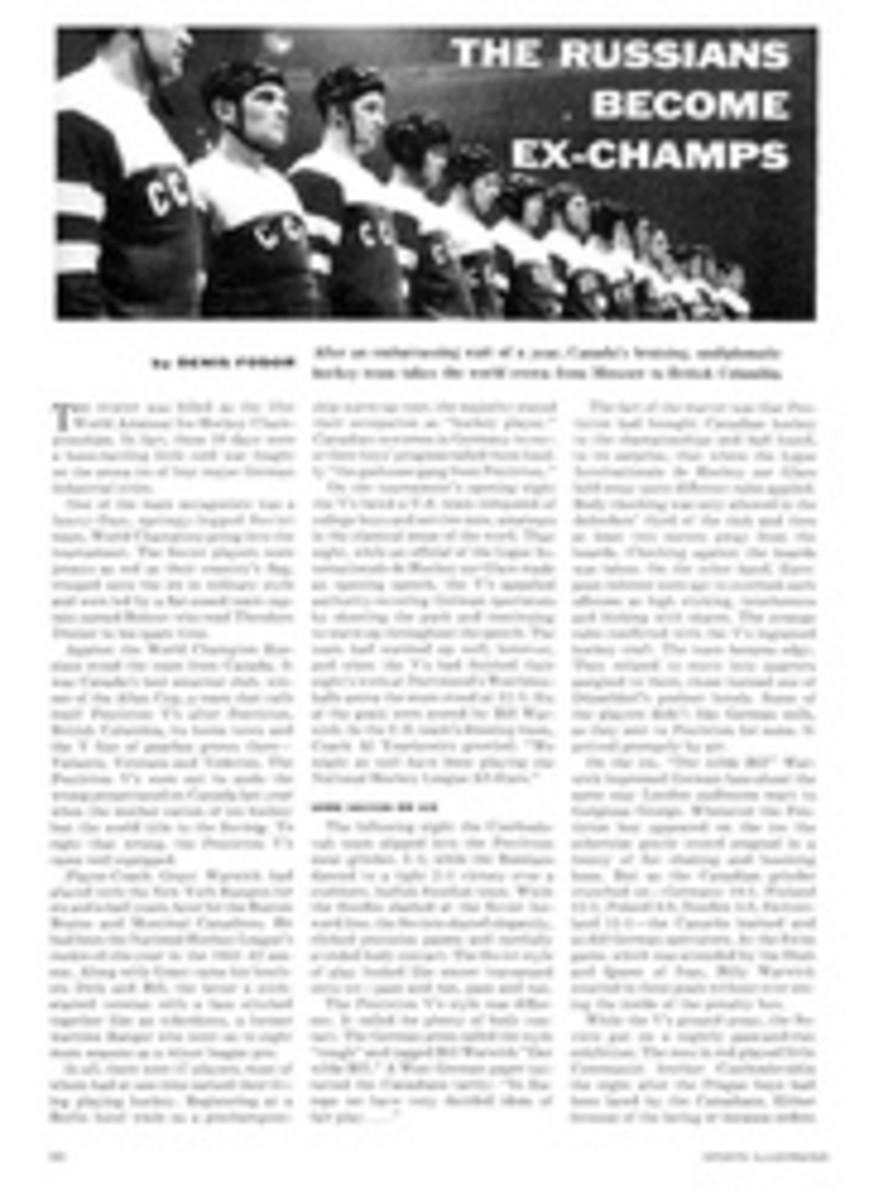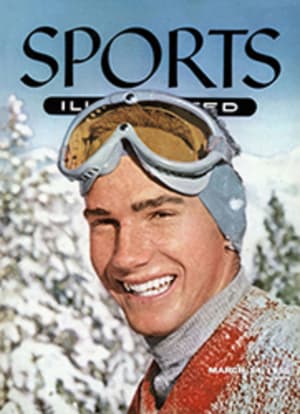
A DAY FOR THE LADIES
The Milwaukee Sentinel noted on Jan. 25, 1855 that "a party of ladies assembled at the Young America saloon and amused themselves with the game of tenpins to the great amusement of witnesses." This is a fair summary of what occurred here the other day when Detroit housewives Dorothy Aldred, 40, and Helen Shablis, 41, defeated 47 other stellar teams for the U.S. women's doubles championship. Despite their acknowledged contribution toward taking the sport out of saloons, and their drawing power at the gate, the ladies again bowled mainly for amusement, as they have for 100 years.
This time, however, there was a rebellious undertone to the crash of pins and the cheers of the S.R.O. crowd at Edwardina (Eddie) Coy's Whittier Recreation. And the women who complained about the anemic prize fund-there were 12 cash awards and even the $500 for first place would not have covered expenses of some teams from out of town—found a champion in Mrs. Coy herself. They could not have done better. A short, thickset woman who admits to middle age, she has combined keen business judgment, an effervescent personality and an almost fanatic devotion to bowling to become one of the nation's leading proprietors.
"Like the man who played at the crooked roulette table because it was the only one in town, these girls will continue to bowl in our [BPAA] tournaments even though it costs them a great deal of money," Mrs. Coy said, pointing in the general direction of the 18 gleaming lanes where the women stars were shouting encouragement to each other. "Look at them. Ann Noga and Barbara Craig, all the way from New Jersey. They paid a $50 entry fee, plane fare to Detroit, hotel and food bills for at least three days. Sure, they're doing it because they love the game, but the publicity they're getting and the show they're putting on here helps every bowling proprietor in the country. And what does the BPAA do for these kids? It adds $300 to their prize fund, which averages out to about 10¢ for each proprietor." Mrs. Coy snorted. "What we proprietors should do is chip in at least $5 apiece and set up a $15,000 fund for the kids next year," she continued. "We'd get our money back 100 times over just in games they'd roll practicing for the tournament."
To give the proprietors their due, this was only the second women's doubles and it proved more popular than the first. But it cries for someone with Mrs. Coy's dedicated vitality to mold it into a titular event of national importance. As it was, only those lucky enough to have sponsors or husbands with loose purse strings were able to compete. There were no teams, for instance, from such bowling centers as New York and Los Angeles. Anne Johnson, the Hazelton, Pa. schoolteacher who won the Women's International Bowling Congress all-events crown last year, was not on hand, nor were a majority of the stars who qualified for the All-Star classic.
THE "BANKROLL" AND THE HOT-N-TOTS
Mrs. Coy, who was a fair bowler for 14 years before becoming a partner in Whittier Recreation in 1940 (she has been sole owner since 1950), is perhaps best known in bowling circles for her Hot-n-Tot League which includes children aged 3 and 4. Locally she is known as "The Bankroll" for women's teams—she has sponsored at least 18 quintets in Detroit Women's Bowling Association tournaments for the past 13 years—and for girls who show promise on the lanes but cannot afford to practice. In addition to her bowling interests, she is president of the Sport Queen Dress Co., which this year contributed $5,000 to a "junior miss" bowling program here. Realizing that even one with her energy requires a holiday, Mrs. Coy takes off two weeks a year—to watch the All-Star competition in Chicago.
As far as the doubles tournament was concerned, the Aldred-Shablis team, if you haven't heard, put on a thrilling last-frame rally to win by two pins over red-haired Stephanie Balogh and graying Delphine Doane of Cleveland. Mrs. Aldred, who has sons of 16 and 10, and Mrs. Shablis, with a son of 17 and a daughter aged 14, recorded 6,053 for the 16 games—a 378 average. Elvira Toepfer and Connie Powers of Detroit had a fine opportunity to win but fell down in the final game to finish with 6,020, although Miss Toepfer's 3,137 (a shade over 196 average) was high for the two-day contest. Sylvia Wene, U.S. singles champion, and Mary Cappo of Philadelphia were a distant fourth with 5,982. Marion Ladewig, considered the greatest woman bowler of all time, did not seem as strained as she did in January at the All-Star, when she lost her title to Miss Wene, but she was still far off her old form. She scored 2,968 (185 average) to land 20th place with Wyllis Ryskamp.
Three nights later—Tuesday, March 1—in their first head-to-head meeting since the All-Star, Mrs. Ladewig bowled a 266 game and 658 series to defeat Miss Wene by three pins on the Championship Bowling show in Chicago. Many took this as a hopeful sign that the 40-year-old Grand Rapids, Mich. grandmother has at last started her comeback, but I'm still inclined to believe this will not happen until she has had a rest. Mrs. Ladewig bowled through last summer, hit her peak in October and has been wearily going through the motions since. Like Willie Mays, she has learned that when you stretch a season too long you take the fun out of work.
ILLUSTRATION

